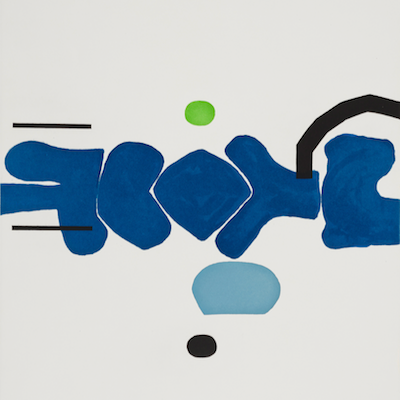
Details
Artist
Styles
Screenprint in Colors on Paper - Hand-signed by Vasarely - From the portfolio Cinétique (Benavides 31), 1956 - Published by Denise Renè, Paris, in 1959 // OETA by Victor Vasarely is a 1959 screen-print from his Cinétique portfolio, published by Denise René, Paris. This piece exemplifies Vasarely's optical and kinetic art, featuring a geometric composition of black, white, and shades of gray. A grid of squares and rectangles appears to warp and shift in space, creating a dynamic illusion of movement and depth. The precise arrangement of shapes and contrasting tones engages the viewer's perception, a hallmark of Vasarely's exploration of visual effects. Hand-signed by the artist, this work captures the essence of the Op Art movement, playing with geometry and optical illusions.
OETA, 1959
form
Medium
Size
54.6 x 36.8 cm
- Inches
- Centimeters
Edition
Price
- USD
- EUR
- GBP
Details
Artist
Styles
Screenprint in Colors on Paper - Hand-signed by Vasarely - From the portfolio Cinétique (Benavides 31), 1956 - Published by Denise Renè, Paris, in 1959 // OETA by Victor Vasarely is a 1959 screen-print from his Cinétique portfolio, published by Denise René, Paris. This piece exemplifies Vasarely's optical and kinetic art, featuring a geometric composition of black, white, and shades of gray. A grid of squares and rectangles appears to warp and shift in space, creating a dynamic illusion of movement and depth. The precise arrangement of shapes and contrasting tones engages the viewer's perception, a hallmark of Vasarely's exploration of visual effects. Hand-signed by the artist, this work captures the essence of the Op Art movement, playing with geometry and optical illusions.
- Recently Added
- Price (low-high )
- Price (high-low )
- Year (low-high )
- Year (high-low )
What is constructivism?
Constructivism is an architectural and artistic philosophy of Russian origin that emerged as a rejection of the idea of autonomous art. The movement advocated for art to serve practical social purposes. Since its inception in 1919, Constructivism has evolved and significantly impacted 20th-century art movements, influencing major trends such as De Stijl and Bauhaus.





































































